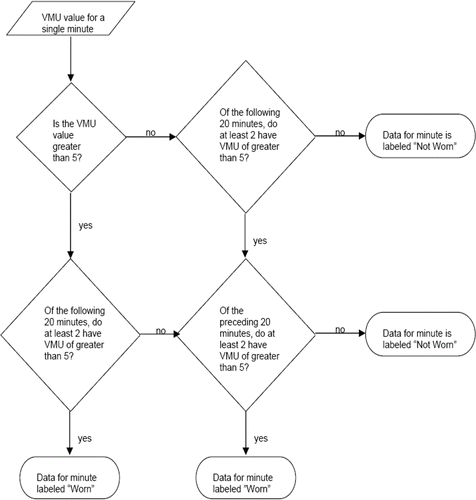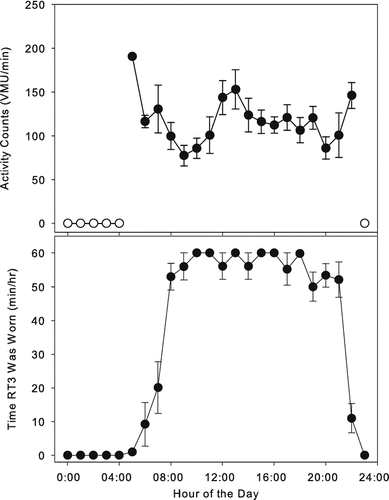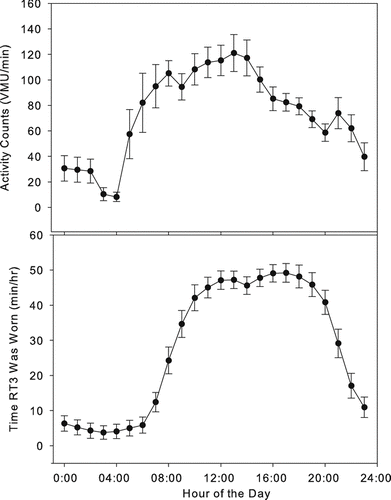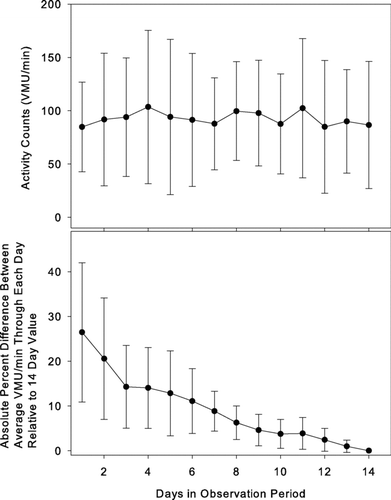Figures & data
Figure 1 Decision tree by which the time course of vector magnitude unit (VMU) values is analyzed to determine, for a particular minute, whether the activity monitor is worn or not worn.

Table 1 Characteristics of the Subjects Studied (mean ± SD)
Figure 2 Selected minute-by-minute vector magnitude unit (VMU) records of activity monitor recording, representing one hour each of high activity (left panel), sedentary activity (center panel), and a non-wearing period during the night (right panel). Note differences in ordinate scales in the three plots. See text for implications of differing analysis strategies for these data.

Figure 3 Examples of averaged daily activity profiles for a subject. Upper plot: vector magnitude units (VMU) per minute for each hour of the day (±SE), averaged over a 14-day period (open circles denote hours when monitor was never worn). Lower plot: minutes per hour the monitor was worn (±SE) for each hour of the day, averaged over a 14-day period.

Figure 4 Average daily activity profiles for all 22 subjects, averaged over the 14-day observation period (mean ± SE). Upper plot: average vector magnitude units (VMU) for each hour of the day. Lower plot: average minutes in which the activity monitor was worn during each hour over the course of the day.

Figure 5 Upper plot: Average vector magnitude unit (VMU) per minute daily activity over the 14-day observation period for all 22 subjects for minutes in which the activity monitor was worn. By the reverse arrangements test, there is no significant trend of activity levels over time (p < 0.01). Lower plot: Average of the absolute value of the deviation of the average activity level calculated through each successive day relative to the subject's average activity level over the 14-day observation period. Values are mean ± SD. See text for further discussion. Note that not until 7 days of recording does the average activity level fall within 10% of the 14-day value.

Figure 6 Average (±SD) minutes spent per day over a 14-day observation period in three vector magnitude unit (VMU) activity ranges in 22 COPD patients.
